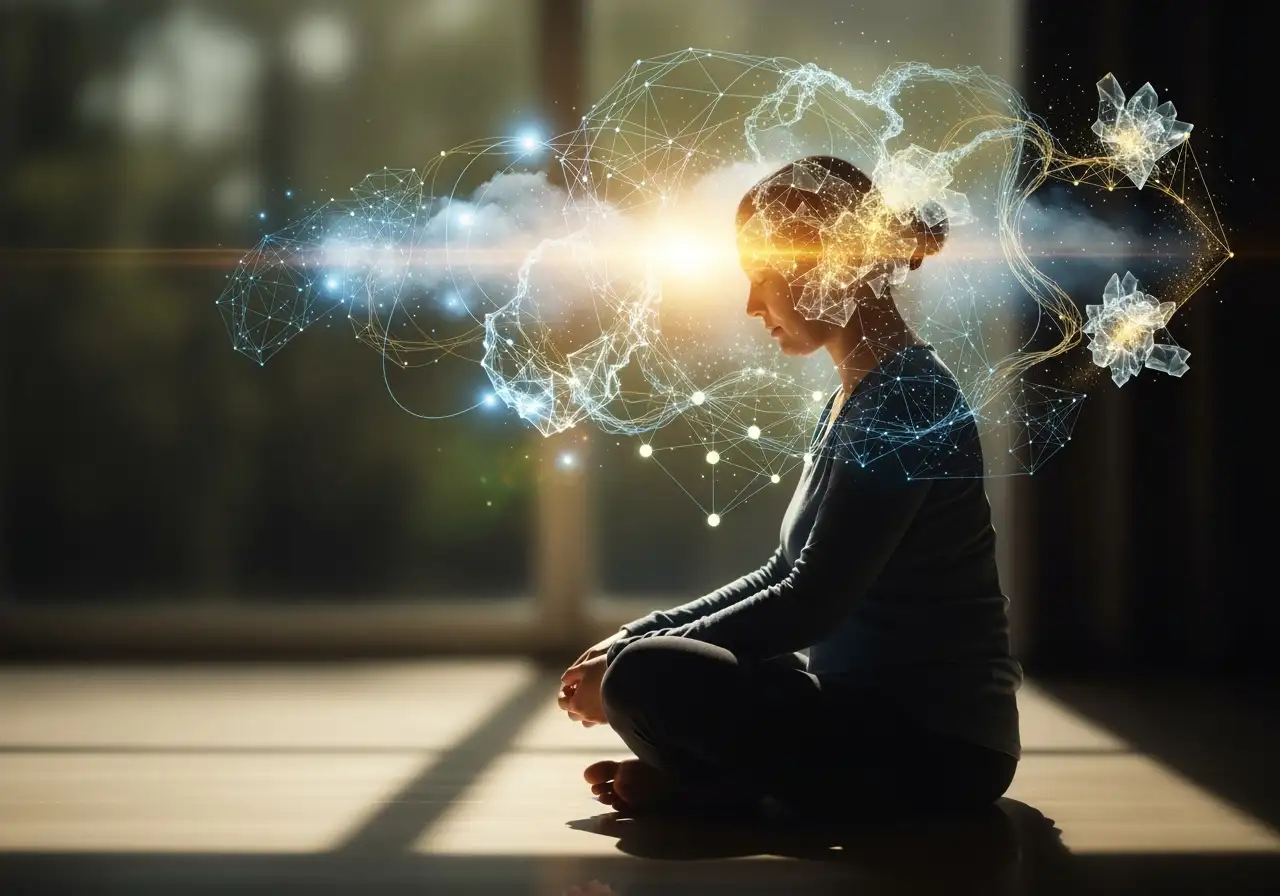The Timeless Essence of Your Core Self
The Timeless Essence of Your Core Self
In the Quantum Mindfulness framework, few concepts hold as much transformative power as the Core Self. This fundamental wellspring of consciousness is described as pure potentiality, the inherent capacity to choose, and an immutable “I-ness” that exists prior to any specific thought, emotion, or conditioned pattern. While this idea might seem novel in contemporary discussions of personal development, its profound essence echoes through millennia of human inquiry into the nature of existence and consciousness.
Long before the advent of modern psychology or neuroscience, ancient civilizations and philosophical traditions grappled with the very questions that the Core Self seeks to address. Across diverse cultures, thinkers and mystics independently arrived at the notion of an unconditioned, unchanging essence within each individual, distinct from the fleeting experiences of the mind and body.
In the East, particularly within Hindu and Buddhist philosophies, the exploration of this inner ground reached sophisticated heights. Hinduism speaks of Atman, the individual soul or self, which is ultimately identical with Brahman, the universal, absolute reality or consciousness. The journey of self-realization in these traditions is precisely about transcending the illusory layers of ego and conditioned existence to apprehend this eternal, unchanging Atman. This resonates deeply with the Core Self’s nature as pure potentiality, lying beyond the transient states of the mind. Similarly, while Buddhism emphasizes the concept of anatta (no-self or non-self) in relation to the impermanent, composite nature of our conventional identity, many schools also point to a fundamental, luminous awareness or “Buddha-nature” that is the ground of all experience and potential for enlightenment. This pure awareness, unconditioned and ever-present, mirrors the Core Self as the ultimate source of consciousness before any psychodynamic dimension takes form.
Moving westward, while often expressed through different lenses, similar quests for an inner truth persisted. From Greek philosophers like Plato, who pondered the world of Forms—an eternal, unchanging realm of perfect ideas that reality imitates—to later mystical traditions within Abrahamic religions, the idea of a divine spark or uncreated essence within humanity has been a recurring theme. This “spark” often implies an intrinsic connection to a higher order or a sacred origin, suggesting an innate worth and potential beyond worldly conditioning. Even in more modern contexts, the humanistic psychology movement, with figures like Abraham Maslow and Carl Rogers, emphasized the inherent drive towards self-actualization and the realization of one’s full potential, hinting at an underlying, positive force within each individual that guides growth and well-being.
The Quantum Mindfulness framework doesn’t just borrow these ancient concepts; it integrates them into a practical, actionable system for conscious living. The Core Self finds its operational expression within the framework’s architecture, most notably through the Psycho-Volitional Dimension (Pd1). This dimension embodies pure potentiality and represents the absolute genesis of cognitive activity. It is the very source of our inherent capacity to choose and initiate conscious action. The Core Self, operating through Pd1, possesses an annihilative property, allowing it to dissolve perceived limitations, mental blocks, and constricting conceptual frameworks that hinder our true expression.
Understanding the Core Self activates the Observer-Participant Dynamic. As the ultimate Quantum Observer, your conscious attention is not merely a passive witness but an active force that fundamentally shapes your experienced reality. This is the essence of the Active Constitutive Force View of perception, where your engagement with mental phenomena constitutes a creative intervention. By aligning with the Core Self, you move beyond unconscious reactive collapse, where mental states solidify based on ingrained patterns or inherited scripts. Instead, you can engage in Intentional Collapse, consciously guiding the psychodynamic wave collapse of mental possibilities into desired actualized experiences. This process, often facilitated by Superpositional Cognitive Engineering, allows you to work directly with the state of cognitive superposition, where multiple thoughts or perceptions coexist as a dynamic probability field, and steer them toward an optimal cognitive state.
The journey to connect with your Core Self also involves recognizing and liberating yourself from inherited scripts. These are pre-existing mental patterns, narratives, and biases—often formed by external influences and conditioning mechanisms—that create a false native architecture within your psyche. They can lead to ontological misalignment, a fundamental discrepancy between your true nature and your lived experience. The liberation process, a core therapeutic strategy in Quantum Mindfulness, systematically identifies and transcends these limiting patterns, paving the way for authentic self-origination and the cultivation of a sovereign architecture. This aligns with the Mind Controls Brain Principle, which posits that consciousness, rooted in the Core Self, is the true orchestrator of experience, with the brain serving as a mediating organ.
Ultimately, the goal is to achieve perceptual freedom—the capacity to consciously choose how potential experiences actualize, enabling adaptive engagement with challenges and conscious evolution. This journey into your inner blueprint, and the discovery of your Core Self, is not just a modern innovation; it’s a continuation of humanity’s enduring quest to understand its deepest nature. Quantum Mindfulness provides the tools to apply these timeless insights practically, allowing you to navigate the complexities of your contemporary mind with greater agency, clarity, and purpose, and to deliberately shape your subjective reality.






